Choosing a Guided Hiking Company:
10 Points To Success
Alaska is not only the largest state in America but it is home to more pure wilderness than the entire western half of the country.
The idea of hiking in the remote Alaskan wilderness can be, understandably, quite intimidating.
Unless your previous backcountry experiences have included multi-day hiking in roadless areas without trails, you should probably investigate the possibility of hiring a guide.
Guided hiking trips are quite common and occur throughout Alaska. They range in scale from day hikes escaping urban confinement to high alpine, fly-in-only, mountain traverses.
The value of hiring a guide or guide service for an Alaskan wilderness adventure is unquestionable. Making the right choice, however, can be as challenging as crossing a rain-swollen creek.
The act of hiring a person or team to lead you or a small group of like-minded people to a destination or area of special interest should be easy.
Guides are men and women who have special knowledge and skillsets that align with your goal, whether it is climbing the highest peak in North America or strolling through an art museum.
We hire these guides for their expertise and we rely on them to provide us with an experience we feel may not be available if we go it alone and do it ourselves.
Often the guides are working for a company that has a long history of operation in the area and forms the backbone of your experience.
There are several key elements that you should be looking for when gathering information on selecting the company that you will eventually book your trip with. In making your decision to go with a guide, carefully weigh your options, consider the outcome you want from this wild adventure and follow your heart in the final decision.
It is fairly common to be influenced by a previous experience or through the experience of a trusted source; a friend or relative or even an article or review you read. Regardless, theirs is an opinion you value and feel comfortable to lean on in making your choice.
There are several noteworthy qualities that you should be aware of and looking for. Their presence should impact and influence your decision.
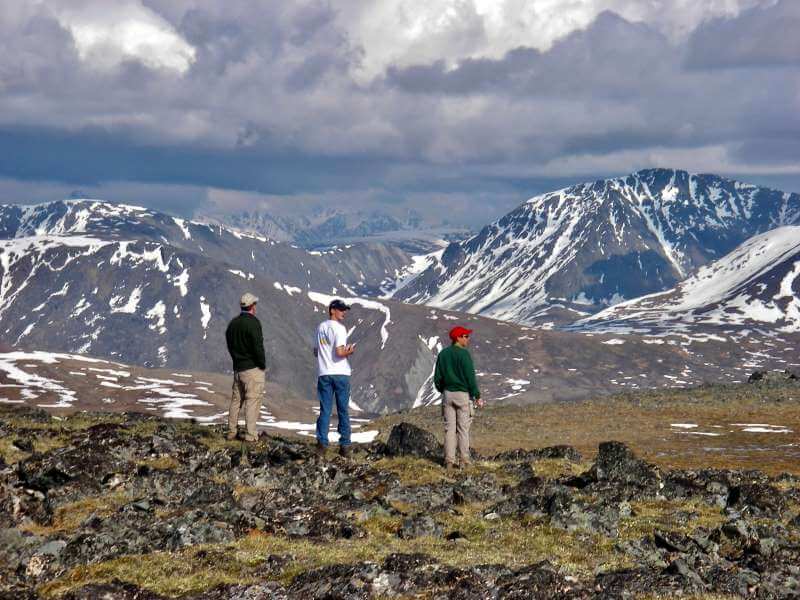
1. Communication
Of primary importance for anyone hiring a guide for a wilderness hiking adventure is communication. From beginning to end, you will want to be in contact with a person or company that responds quickly and thoroughly to your questions, comments, and needs for advice.
What you are looking for are thoughtful, focused responses aimed directly at answering your question with samples or examples given to drive home the point.
It is fairly easy to tell if you are dealing with a genuine, experienced, and conscientious person on the other end of the line. It is one who wants your business but also wants to make sure they can provide what you need.
Your job sifting through guided hiking operations is to ask pointed questions and expect detailed, on-target answers. If you don’t get them, move on.
2. Guide-To-Guest Ratio
As an example, a very important dynamic to know when seeking a high-quality experience is the guide-to-guest ratio.
You are going to have quite a different experience being a member of a group of four hikers as you would in a group of twelve hikers.
Caution: If the company doesn’t have a maximum group size, be very careful. They may not be so much concerned about you as they are about their bottom line. Go to the next company!
3. Experience
Experience is another very valuable commodity in selecting a guide or a company to do your once-in-a-lifetime trip with. A company that has been in business for decades is usually a safe bet for providing an outstanding hiking tour.
It is recommended to ask for a reference list. Contact three or four sources on the list for feedback. Ask the references about their trip and what were the high points and maybe what they would see as areas that might need improvement.
Ask them about the guide, about the weather, about the equipment, about the food, and about the organization. Did they appear to operate like a well-oiled machine or an outfit that was winging it?
Organizational skills are a critical component to safety and a feeling of security and comfort for the guest experiencing his/her first remote Alaskan adventure.
You will also want to know what the guides are like. Are they local men and women who grew up in the area and have traveled extensively in the Alaskan backcountry? Have they climbed Denali? Are they college students working a summer gig? How long have they worked for the company? Are they trained in First-aid and CPR? Can they cook a meal?
Remember, you will be spending 24 hours a day with your guide for the length of the trip. You definitely want to do a little research to make sure they are the right stuff.
4. Shelter
Shelter is one of the three elemental human needs. Having the highest quality equipment available for guest use is another key component to a superlative company.
Weather extremes exist every month of the year in wild Alaska. It can be life-threatening if you do not have the proper equipment and the caliber necessary to handle Mother Nature’s punishing outbursts. Tents, sleeping bags, and pads are your first line of defense tools in harsh weather.
Your tent should be a three-season, fly-to-ground, aluminum poled, and wind-resistant design that is simple, easy to put up, bullet-proof (wind and rain co-efficient), and not a burden to carry.
Sleeping bags, covering ranges from 0 to 50, durable, synthetic, packed in a compression bag and dry bagged are required equipment for every wilderness outing.
This cocoon is your best friend when wind, rain or both, get rambunctious. It operates best when the barrier between you and the earth includes a sleeping pad of sufficient length to cover your torso, head through knees, and sufficient depth to insulate and protect you from the ground.
Self-inflating pads operate well in the summer months. Pre-inflated size is a big consideration for minimizing backpack bulk. Tiny is good. Go with recommendations from trusted sources.
5. Fuel
Fuel is the next most important item. This is the fuel you use to stoke your energy supply to meet the demands of carrying a backpack in mountainous terrain.
Every person working in the mountains needs a quality supply of fat, protein, and carbohydrates to replenish the day’s energy burn and to re-charge for the next day’s workout.
Simple menus with ample, savory, foods and a modest treat, provide the best nourishment and generate the most memorable post-dinner conversations! Flasks appear, memories shine, laughter and joy are cemented forever.
Sadly, this may not be the case for many hikers. Special, individual dietary conditions are more the norm today than ever before. People have become acutely aware of their intake, the desired results, and the impacts of foods outside their tolerance levels.
During your initial contact with companies providing guided hiking experiences, write them detailed questions of how they can or will accommodate your special needs.
A rock-solid organization will be proud and happy to deliver exactly what you want, need, and expect for satisfying your fuel needs for the duration of your time in the mountains.
6. Location
Location is also of critical importance when you are considering a remote wilderness hiking adventure in Alaska.
Some areas have groomed trails, but far more do not. In the wilderness, you walk the line of least resistance and, in Alaska, there are areas where the resistance is enormous.
The very best hiking is above the tree-line in alpine areas where vegetation is minimal and clustered along creeks, rills, and waterways.
We don’t hang our backpacks in trees, for the simple reason there are no trees where we go hiking. We use alternative methods of protecting our food and gear from bears and other curious creatures.
Ask for details about trip location and terrain to be encountered.
7. Cost
Cost is certainly a factor in making your decision to hire a company and guide for your Alaskan wilderness adventure.
The two main hubs are Anchorage and Fairbanks, but, in-state, round-trip flights from these two locations can add thousands of dollars to the cost of your adventure. You need to know all the costs of the trip you are undertaking, especially transportation costs.
Alaska covers an area of enormous size and holds the distinct honor of having the fewest miles of road per capita than anywhere in America. It is highly likely that you will fly in an airplane in order to access remote hiking areas.
Specialized “Bush” plane costs can be astronomical, often twice as much as the cost of getting to Alaska in the first place.
Make sure you know if the flights into and out of the mountains are included in the price of the trip. It is a big factor when you are comparing costs from one business to another. Hidden costs can be shocking and most distasteful.
8. Takeaways
The takeaways from your experience are also of great importance. Will you learn anything on the trip? Will you discover something new, unique, special, or touching?
Ask about unusual geographic features that might be noteworthy. Are there archeologically significant sites where indigenous people gathered and traded?
What about the wildlife you will be seeing? What species? How many? Daily sightings? Are there migratory bird species that you may have never seen?
What about wildflowers? Some of the most beautiful photographs you can take are the precious, tiny, wildflowers that bloom in alpine meadows during the summer months.
Are you going to receive instructions on orienteering, using a map and compass, building a fire, making your water potable or using a JetBoil to make your meals? How about learning to select the perfect campsite?
Will there be skills taught to make you a better hiker or a better steward of the wilderness? No Trace Camping techniques employed?
9. Safety
Safety is essential for every single wilderness trip in Alaska. Risk is inherent; risk management is imperative and being prepared for adversity is fundamental.
Every team in the mountains should have multiple devices for communication. Satellite phones are compulsory as are the extra all-charged-up batteries.
Cell phones are useful even without signal and so light and compact the burden of bringing them is insignificant.
Ground-to-air radios are also excellent devices for communication in times of emergency.
No group in the mountains should be without these three items.
A First-aid kit specifically designed and assembled for the trip should be the first thing placed in the lead guide’s backpack. He/she should know exactly what is in there, how to use everything that is in there, and know when to use them!
All Alaskan guides should have a current Wilderness First Responder Course certification. This class teaches techniques used to treat injuries that are most likely to happen during a remote outing. They use real-life scenarios to train students and the training is extraordinary.
10. What Separates This Guided Hiking Service From The Rest?
The last thing you will want to know when selecting your company or guide service for a wilderness hike in Alaska is what is it that separates them from the rest of the companies out there.
Do they have something, anything, that might be “special”?
Somewhere on their website, I want to read: “No other company in the world offers this…..”
Remember, you are embarking on an Alaskan wilderness adventure. You need to feel confident that you are prepared for the trek ahead long before you board the airplane for the ascent into the mountains.
Following these guidelines for selecting the right company will go a long way in making that happen. Once you finalize your decision on hiring a guide, your stress level for the upcoming hike evaporates and the excitement of anticipation rises like a cloudless morning.
That is a huge plus for you!
Additional Hiking Resources
More from Billy's Blog
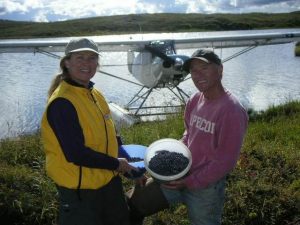
Alaska Hiking and Trekking with Denali Trekking Company
Best Hikes in Alaska Denali Trekking Company offers a variety of hiking experiences in pure Alaskan wilderness where the only access is by airplane. Our hikes span all skill levels and experience levels. We have beginner hikes that are easy, moderate hikes for folks that have some limited experience and challenging hikes that may be
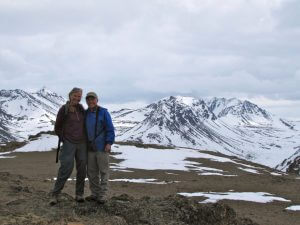
Alaska’s Finest Hiking Adventures
Denali Trekking Guides Our guides are home spun wilderness travelers with an unquenchable thirst for adventure. Each guide possesses unique skills for enjoying the best that the Alaskan wilderness has to offer. Some are expert fly fishermen, others are talented bird watchers or semi-professional photographers and they all are gifted with keen eyes for observing
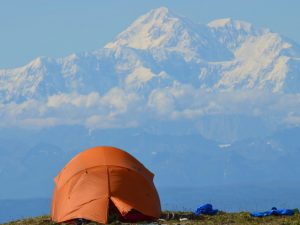
Why book your Alaska Hiking Adventure with Denali Trekking Company?
Denali Trekking Company has been in continual operation since 1984. Every year we have been in business, we have added quality to our operation. Experience is the key in perfecting your product. The benefits to you, for our two decades of guided hiking experiences, are my guides and I operate a well-oiled machine and our
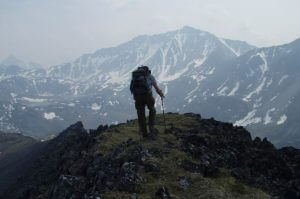
Preparing for a Hike in the Alaskan Wilderness
Whether you are a seasoned backpacker or a novice day-hiker, trekking in the Alaska wilderness will present new and unique challenges. By preparing your body correctly and building endurance through exercise, your hiking experience will be greatly enhanced. It is not always easy or convenient, however, discipline in the exercise program that you commit to,
